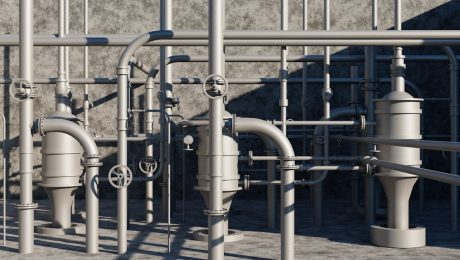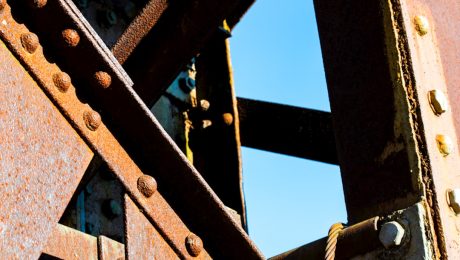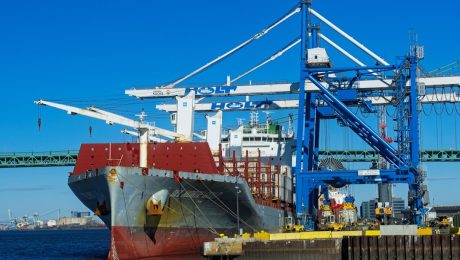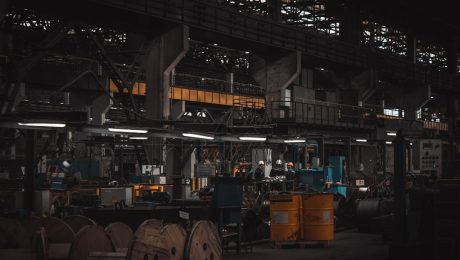In today’s competitive landscape, customer satisfaction isn’t just a desirable outcome; it’s a crucial driver of business success. Happy customers become loyal advocates, driving referrals and repeat business. This post explores key initiatives to not only meet but exceed customer expectations, fostering a culture of delight and long-term profitability.
1. Proactive Customer Service: Preventing Problems Before They Arise
Reactive customer service addresses issues *after* they occur. Proactive service, however, aims to anticipate and prevent problems altogether. This involves a deep understanding of your customer base and their potential pain points. Here are some key strategies:
- Personalized Communication: Utilize data to segment your customer base and tailor communication. Proactive emails offering relevant support or product updates show you value their individual needs.
- Regular Check-ins: Reach out periodically to check on customer satisfaction. A simple survey or phone call demonstrates genuine care and allows for early detection of potential issues.
- Knowledge Base & FAQs: A comprehensive and easily accessible knowledge base empowers customers to solve common problems independently, reducing the need for direct support.
- Predictive Analytics: Leverage data to identify patterns and predict potential issues. For example, if a certain product consistently receives negative reviews, you can proactively address the issue before it impacts a larger customer base.
2. Harnessing the Power of Customer Feedback: Listening and Responding
Customer feedback is invaluable. It provides direct insight into what’s working, what’s not, and where improvements can be made. Effective feedback mechanisms are essential for continuous improvement:
- Surveys: Implement post-purchase, mid-journey, and periodic satisfaction surveys using various methods (email, in-app, phone). Keep surveys short and focused to maximize response rates.
- Social Media Monitoring: Actively monitor social media platforms for mentions of your brand. Respond promptly to both positive and negative comments, showing customers that you’re listening.
- Review Platforms: Encourage customers to leave reviews on relevant platforms like Google My Business, Yelp, or industry-specific review sites. Respond to reviews, addressing concerns and thanking customers for their feedback.
- Focus Groups and Interviews: Conduct in-depth focus groups or individual interviews to gain richer, qualitative data about customer experiences and expectations.
- Customer Feedback Software: Utilize specialized software to gather, analyze, and manage customer feedback effectively.
3. Empowering Employees to Deliver Exceptional Service
Your employees are the face of your company. Empowering them to deliver exceptional customer service is paramount. This involves:
- Training and Development: Invest in comprehensive training programs that equip employees with the skills and knowledge to handle customer interactions effectively.
- Clear Service Standards: Establish clear guidelines and expectations for customer service interactions, ensuring consistency across all channels.
- Autonomy and Decision-Making Power: Empower employees to resolve customer issues independently, without needing excessive layers of approval.
- Recognition and Rewards: Recognize and reward employees who consistently deliver exceptional customer service, fostering a positive and motivating work environment.
- Open Communication: Foster a culture of open communication where employees feel comfortable sharing feedback and suggestions for improvement.
4. Building a Customer-Centric Culture: Putting the Customer First
Customer satisfaction initiatives aren’t just about isolated actions; they’re about building a culture where the customer is at the heart of everything you do. This requires a company-wide commitment:
- Cross-Departmental Collaboration: Ensure that all departments (sales, marketing, product development, etc.) work together to create a seamless and positive customer experience.
- Customer Journey Mapping: Map out the entire customer journey, identifying pain points and opportunities for improvement at each stage.
- Regular Performance Reviews: Incorporate customer satisfaction metrics into employee performance reviews, demonstrating the importance of customer focus.
- Leadership Buy-in: Secure buy-in from leadership, ensuring that customer satisfaction is a top priority across the organization.
5. Measuring and Tracking Customer Satisfaction: Data-Driven Improvement
Measuring and tracking customer satisfaction is crucial for understanding the effectiveness of your initiatives and identifying areas for improvement. Key metrics include:
- Customer Satisfaction Score (CSAT): Measures overall customer satisfaction with a product or service.
- Net Promoter Score (NPS): Measures customer loyalty and willingness to recommend your brand.
- Customer Effort Score (CES): Measures the ease with which customers can interact with your company.
- Churn Rate: Tracks the percentage of customers who stop using your product or service.
- Customer Lifetime Value (CLTV): Estimates the total revenue generated by a customer over their relationship with your company.
Regularly monitor these metrics and analyze trends to identify areas needing attention. Use data to inform your improvement strategies and demonstrate the ROI of your customer satisfaction initiatives.
By implementing these initiatives, you can cultivate a culture of customer delight, fostering loyalty, driving growth, and achieving long-term success.
Tags: Customer Satisfaction, Customer Service, Customer Loyalty, Customer Experience, Business Growth
The unseen infrastructure beneath our streets – water and gas pipes – plays a vital role in our daily lives. Their reliability and safety are paramount, demanding stringent quality standards throughout their lifecycle, from manufacturing to installation and maintenance. This post delves into the crucial aspects of ensuring pipeline perfection.
Material Matters: Choosing the Right Stuff for Water and Gas Pipes
The choice of material significantly impacts the pipe’s lifespan, durability, and resistance to corrosion. For water pipes, common materials include:
- Copper: Known for its durability, resistance to corrosion, and ability to withstand high water pressure. However, it can be expensive.
- PVC (Polyvinyl Chloride): A cost-effective and lightweight option, resistant to corrosion but susceptible to damage from extreme temperatures and UV radiation.
- PEX (Cross-linked Polyethylene): Flexible and resistant to freezing, making it suitable for various applications. It’s also relatively inexpensive.
- CPVC (Chlorinated Polyvinyl Chloride): Offers higher temperature resistance than PVC, making it suitable for hot water systems.
- Ductile Iron: A strong and durable material often used for larger water mains, offering excellent resistance to pressure and corrosion.
Gas pipes, due to the inherent dangers of gas leaks, require even stricter material selection. Common materials include:
- Steel: High strength and durability, often coated with protective materials to prevent corrosion.
- Polyethylene (PE): A flexible and lightweight material, commonly used for low-pressure gas distribution.
- High-Density Polyethylene (HDPE): Offers superior strength and durability compared to standard PE, suitable for higher-pressure applications.
The selection of material depends on factors such as pressure, temperature, soil conditions, and the specific application.
Stringent Testing: Ensuring Pipeline Integrity
Rigorous testing is crucial to ensure that pipes meet the required quality standards. This involves various methods depending on the material and application. For example:
- Hydrostatic Testing: Pipes are filled with water under pressure to check for leaks and weaknesses.
- Burst Testing: Pipes are subjected to increasing pressure until they burst, determining their maximum pressure capacity.
- Non-Destructive Testing (NDT): Methods like ultrasonic testing and radiographic testing are used to detect internal flaws without damaging the pipe.
- Chemical Testing: Used to ensure that the material composition meets the specified requirements and doesn’t leach harmful substances into the water.
These tests are conducted at various stages of the manufacturing process and before installation to guarantee the integrity and safety of the pipes.
Regulatory Compliance: Adhering to National and International Standards
Water and gas pipes must comply with various national and international standards and regulations to ensure safety and performance. These standards specify material requirements, testing procedures, and installation practices. Examples include:
- ASTM International (ASTM): Develops and publishes numerous standards for materials, testing, and performance of pipes.
- ISO (International Organization for Standardization): Provides international standards for various aspects of pipe manufacturing and installation.
- National Standards Organizations: Each country has its own national standards organization that sets specific requirements for pipes within its jurisdiction.
- Local Building Codes: Local building codes often incorporate these standards and may add specific requirements based on local conditions.
Adherence to these regulations is crucial for ensuring the safety and longevity of water and gas distribution networks.
Installation Best Practices: Minimizing Risks and Ensuring Longevity
Proper installation is just as crucial as material quality and testing. Incorrect installation can lead to leaks, damage, and premature failure. Key aspects include:
- Proper Trenching and Bedding: Pipes need to be laid in properly prepared trenches with suitable bedding material to prevent damage and ensure stability.
- Correct Joining and Connection: Appropriate joining methods must be used to ensure leak-free connections. This might involve welding, threading, or using specialized fittings.
- Backfilling and Compaction: Proper backfilling and compaction of the trench is crucial to prevent settlement and damage to the pipes.
- Leak Detection and Repair: Regular inspection and leak detection are essential to identify and repair any issues promptly.
Following established installation best practices significantly contributes to the long-term reliability and safety of water and gas pipelines.
Maintenance and Inspection: Prolonging Pipeline Lifespan
Regular maintenance and inspection are crucial for extending the lifespan of water and gas pipes and preventing costly repairs or replacements. This includes:
- Visual Inspections: Regular visual inspections can identify external damage, corrosion, or leaks.
- Pressure Testing: Periodic pressure testing can detect internal leaks or weaknesses.
- Corrosion Control: Implementing strategies to prevent or mitigate corrosion is vital for extending pipe lifespan.
- Preventive Maintenance: Proactive measures such as cleaning and flushing can prevent blockages and improve efficiency.
<liLeak Detection Technologies: Advanced technologies like acoustic leak detection can help pinpoint leaks more efficiently.
A robust maintenance program is essential for ensuring the continued safe and efficient operation of water and gas distribution systems.
By adhering to these quality standards, we ensure the safe and reliable delivery of essential resources to our communities.
Steel frames are ubiquitous in modern construction, offering strength, versatility, and speed of construction. Designing these structures, however, requires a deep understanding of engineering principles, design codes, and material properties. This comprehensive guide delves into the key aspects of steel frame design, providing a detailed overview for both professionals and students.
1. Understanding Load and Stress Analysis in Steel Frame Design
The foundation of any successful steel frame design lies in accurately predicting and managing the loads and stresses the structure will experience. This involves a thorough understanding of various load types, including:
- Dead Loads: The weight of the structure itself, including steel members, cladding, and other permanent fixtures.
- Live Loads: Variable loads such as occupancy loads (people, furniture), snow loads, and wind loads. These are often determined using relevant building codes and local climatic data.
- Seismic Loads: Forces generated by earthquakes, crucial for structures in seismically active regions. These loads are calculated using dynamic analysis methods and are heavily dependent on the site’s location and soil conditions.
- Environmental Loads: Include temperature variations leading to thermal expansion and contraction, and the effects of ice and snow accumulation.
Once loads are determined, structural analysis techniques, such as finite element analysis (FEA) or simplified methods like portal frame analysis, are employed to calculate internal forces (axial forces, shear forces, and bending moments) within the members. These forces are then used to determine the required section properties of the steel members to ensure adequate strength and stability.
2. Selecting Appropriate Steel Sections and Grades
The choice of steel section (e.g., I-beams, H-beams, channels, angles) and grade significantly impacts the design’s efficiency and cost. Several factors influence this selection:
- Strength Requirements: The calculated stresses from the analysis dictate the minimum required section modulus and yield strength.
- Structural Stability: Slender members are prone to buckling under compressive loads. Section selection must consider the member’s slenderness ratio and the potential for lateral-torsional buckling.
- Cost Optimization: Different sections offer varying strength-to-weight ratios. Optimizing section selection balances structural performance with material cost.
- Availability and Fabrication: The chosen sections should be readily available in the market and easily fabricated to meet the design requirements.
- Steel Grade: Higher strength steel grades (e.g., A992) offer increased strength and reduced weight compared to lower grades (e.g., A36), but may have limitations in weldability and cost.
Software tools and design handbooks are invaluable in this selection process, providing comprehensive databases of available sections and their properties.
3. Designing Steel Connections: The Heart of the Frame
Steel connections are critical for transferring loads between different members and ensuring the structural integrity of the entire frame. The design of these connections must consider several factors:
- Connection Type: Common connection types include bolted connections, welded connections, and a combination of both. The choice depends on factors like load capacity, fabrication ease, and cost.
- Bolt Selection: Bolt size, grade, and arrangement significantly impact the connection’s strength and stiffness. Detailed calculations ensure adequate bolt capacity to resist shear and tension forces.
- Weld Design: Weld size, type (e.g., fillet weld, groove weld), and placement are crucial for ensuring sufficient weld strength and preventing weld defects. Weld design often adheres to strict code requirements.
- Connection Detailing: Accurate detailing of connections is essential for proper fabrication and erection. Drawings must clearly specify dimensions, bolt patterns, weld sizes, and other relevant information.
- Connection Stiffness: The stiffness of the connections influences the overall structural behavior and must be considered in the analysis.
Proper connection design is crucial for preventing premature failure and ensuring the overall structural integrity of the steel frame.
4. Detailing and Fabrication Considerations in Steel Frame Design
Accurate detailing and efficient fabrication are essential for the successful construction of a steel frame. Detailing involves creating precise drawings and specifications that guide the fabrication process. Key aspects include:
- Member Marking and Identification: Clear marking of members with their size, grade, and other relevant information ensures accurate fabrication and assembly.
- Connection Detailing: As mentioned earlier, detailed connection drawings are vital for precise fabrication of welds and bolt holes.
- Fabrication Tolerances: Allowable tolerances for member dimensions and connection details must be defined and adhered to during fabrication.
- Shop Drawings: Shop drawings are prepared by fabricators and must be reviewed and approved by the structural engineer to ensure compliance with the design.
- Erection Drawings: These drawings provide guidance for the erection of the steel frame on site, including sequence of erection and lifting plans.
Effective communication between the designer, fabricator, and erector is crucial for a smooth and efficient construction process.
5. Code Compliance and Design Standards in Steel Frame Design
Steel frame designs must comply with relevant building codes and design standards to ensure safety and structural integrity. These codes provide guidelines for load calculations, material selection, design procedures, and construction practices. Key considerations include:
- AISC (American Institute of Steel Construction): Provides comprehensive design standards and specifications for steel structures in North America.
- Eurocode 3: The equivalent European standard for steel design.
- AS/NZS 4600: The Australian/New Zealand standard for steel structures.
- Local Building Codes: Local building codes often supplement international standards with specific requirements related to seismic zones, wind speeds, and other local conditions.
- Fire Protection: Code requirements often mandate fire protection measures for steel structures to ensure adequate fire resistance.
Adherence to these codes is crucial for ensuring the safety and longevity of the steel frame structure. Regular inspections and quality control throughout the design and construction process are vital for maintaining compliance.
Designing steel frames requires a multidisciplinary approach, combining theoretical knowledge with practical experience and attention to detail. This guide provides a fundamental overview; further specialized knowledge and software proficiency are essential for professional practice.
SEO Tags:
Steel Frame Design, Steel Structure Design, Steel Connection Design, Structural Steel Design, Steel Frame Analysis
The strength and reliability of steel structures, from skyscrapers to bridges to vehicles, depend critically on the quality of the steel itself. Maintaining consistent and high-quality steel requires a rigorous and multifaceted approach to quality control. This post delves into the essential methods used to ensure the integrity and performance of steel products throughout the manufacturing process.
1. Chemical Composition Analysis: The Foundation of Steel Quality
The chemical composition of steel is paramount to its properties. Variations in the percentages of elements like carbon, manganese, silicon, phosphorus, sulfur, and alloying additions (chromium, nickel, molybdenum, etc.) significantly influence the final steel’s strength, hardness, ductility, weldability, and corrosion resistance. Chemical analysis is performed at various stages of production, from raw material inspection to finished product verification. Common analytical techniques include:
- Spectroscopy (OES): Optical Emission Spectrometry is a rapid and accurate method for determining the elemental composition of steel. It involves exciting the sample with an electric arc or spark, analyzing the emitted light to identify and quantify the elements present.
- X-ray Fluorescence (XRF): XRF uses X-rays to excite the atoms in the steel sample, causing them to emit characteristic X-rays. Analyzing these X-rays provides information about the elemental composition.
- Wet Chemical Analysis: While slower than spectroscopic methods, wet chemical analysis offers high accuracy and is often used for reference or verification purposes. It involves dissolving the steel sample in acid and then using chemical reactions to determine the concentration of individual elements.
Strict adherence to specified chemical compositions is crucial for meeting the required material specifications and ensuring consistent product quality.
2. Mechanical Testing: Assessing the Steel’s Strength and Ductility
Mechanical testing evaluates the steel’s physical properties, providing insights into its strength, ductility, toughness, and hardness. These tests are essential for verifying that the steel meets the required performance standards. Common mechanical tests include:
- Tensile Testing: This classic test measures the steel’s tensile strength (ultimate strength and yield strength), elongation (ductility), and reduction in area. It provides critical information about the steel’s ability to withstand tensile loads.
- Hardness Testing: Hardness tests, such as Brinell, Rockwell, and Vickers, assess the steel’s resistance to indentation. Hardness is a good indicator of the steel’s strength and wear resistance.
- Impact Testing (Charpy or Izod): These tests determine the steel’s ability to absorb energy upon impact, providing insights into its toughness and resistance to brittle fracture at low temperatures.
- Fatigue Testing: This test assesses the steel’s resistance to failure under cyclic loading, crucial for applications involving repetitive stress.
Mechanical testing data provides vital information for designing and selecting appropriate steel grades for specific applications.
3. Non-Destructive Testing (NDT): Ensuring Integrity Without Damage
Non-destructive testing (NDT) methods allow for the evaluation of steel’s integrity without causing damage to the material. These techniques are essential for detecting internal flaws, such as cracks, porosity, and inclusions, which can compromise the steel’s strength and reliability. Common NDT techniques include:
- Ultrasonic Testing (UT): UT uses high-frequency sound waves to detect internal flaws. The sound waves reflect off discontinuities, providing information about their size, location, and orientation.
- Radiographic Testing (RT): RT uses X-rays or gamma rays to penetrate the steel and create an image on a film or detector. This image reveals internal flaws and variations in density.
- Magnetic Particle Testing (MT): MT is used to detect surface and near-surface cracks in ferromagnetic materials. Magnetic particles are applied to the surface, and they accumulate at the cracks, making them visible.
- Liquid Penetrant Testing (PT): PT is used to detect surface-breaking flaws. A penetrating liquid is applied to the surface, and excess liquid is removed. A developer is then applied, drawing the liquid out of any flaws, making them visible.
NDT is critical for ensuring the safety and reliability of steel components in critical applications.
4. Microstructure Analysis: Unveiling the Internal Structure
The microstructure of steel, the arrangement of its constituent phases (ferrite, pearlite, martensite, etc.), significantly influences its mechanical properties. Microstructure analysis involves examining the steel’s internal structure using microscopy techniques. This analysis provides insights into the steel’s processing history and helps to explain its observed properties. Common techniques include:
- Optical Microscopy: This technique uses a light microscope to examine the etched surface of a steel sample, revealing the different phases and their distribution.
- Scanning Electron Microscopy (SEM): SEM provides higher magnification and resolution than optical microscopy, allowing for detailed examination of the microstructure.
- Transmission Electron Microscopy (TEM): TEM offers the highest resolution, allowing for the study of individual dislocations and other microstructural features.
Microstructure analysis is crucial for understanding the relationship between processing parameters, microstructure, and final properties, enabling optimization of steel production processes.
5. Process Control Strategies: Maintaining Consistent Quality Throughout Production
Effective process control is essential for ensuring consistent steel quality throughout the entire production process. This involves monitoring and controlling various parameters, such as temperature, time, and atmosphere, during melting, casting, rolling, heat treatment, and finishing operations. Process control strategies include:
- Automated Process Monitoring and Control Systems: These systems continuously monitor key parameters and automatically adjust process variables to maintain optimal conditions.
- Statistical Process Control (SPC): SPC uses statistical methods to monitor and control process variations, identifying and addressing potential problems before they lead to defects.
- Regular Audits and Inspections: Regular audits and inspections of equipment and processes help to identify and correct potential sources of variation.
- Continuous Improvement Initiatives: Implementing continuous improvement initiatives, such as Lean manufacturing principles, helps to optimize processes and reduce waste.
A robust process control system is fundamental to producing high-quality steel consistently and efficiently.
By employing a combination of these quality control methods, steel manufacturers can ensure the production of high-quality steel that meets the stringent demands of various industries. Continuous improvement and adaptation of these methods are crucial to maintain competitiveness and meet evolving industry standards.
SEO Tags:
Steel Quality Control, Steel Testing Methods, Non-Destructive Testing Steel, Steel Microstructure Analysis, Chemical Analysis Steel
body {
font-family: sans-serif;
line-height: 1.6;
}
h1, h2, h3 {
color: #333;
}
img {
max-width: 100%;
height: auto;
display: block;
margin: 20px auto;
}
Harnessing the power of the sun requires more than just solar panels. The foundation of any successful solar energy system lies in its mounting system. Choosing the right system is crucial for optimal energy production, longevity, and safety. This comprehensive guide explores the various types of solar panel mounting systems, helping you understand the nuances and make an informed decision.
1. Understanding the Role of Solar Panel Mounting Systems
A solar panel mounting system is the infrastructure that securely attaches your solar panels to your roof, ground, or other structures. It’s more than just hardware; it’s a critical component ensuring the panels are properly oriented towards the sun, withstand environmental stresses (wind, snow, rain), and remain safe and stable over their lifespan (typically 25-30 years). A poorly designed or installed system can lead to reduced energy output, panel damage, and even safety hazards. The system includes various components like mounting brackets, rails, clamps, and sometimes even ballast for added stability. The specific components will vary depending on the chosen system type and the installation site.
2. Types of Solar Panel Mounting Systems: A Detailed Comparison
Several mounting systems cater to different installation scenarios. The most common types include:
2.1 Roof-Mounted Systems:
These are the most prevalent type, further categorized into:
- Rack Mounting Systems: These use rails and clamps to attach panels to the roof, offering flexibility and compatibility with various roof types. They are generally preferred for tile and shingle roofs.
- Integrated Mounting Systems: These systems are designed to be seamlessly integrated into the roof during construction, offering a more aesthetically pleasing solution but often more expensive and less flexible.
- Flashing Mounting Systems: Crucial for watertight sealing around the mounting system, preventing leaks. Proper flashing is essential for all roof-mounted systems.
2.2 Ground-Mounted Systems:
Ideal for large-scale solar farms or situations where roof mounting isn’t feasible. These systems use ground posts, adjustable brackets, and rails to securely position the panels. They offer greater flexibility in panel orientation but require significant land area.
2.3 Pole-Mounted Systems:
Suitable for both residential and commercial applications, especially where roof or ground space is limited. Panels are attached to poles, often adjustable for optimal sun tracking.
2.4 Wall-Mounted Systems:
For smaller installations on building walls, these systems require robust wall anchors and brackets to ensure stability. They are often used for residential or small commercial applications.
3. Key Considerations When Choosing a Mounting System
Selecting the right mounting system involves careful consideration of several factors:
- Roof type and condition: The structural integrity of your roof, material (tile, shingle, metal), and slope angle will dictate the suitable mounting system.
- Panel type and size: Different panels have varying weight and dimensions, influencing the mounting system’s load-bearing capacity.
- Local building codes and regulations: Compliance with local regulations is paramount, ensuring safety and preventing legal issues.
- Environmental factors: Wind speed, snow load, and potential seismic activity must be factored into the system’s design for stability and longevity.
- Aesthetics: While functionality is key, many homeowners also consider the visual impact of the mounting system on their property.
- Budget: Mounting systems vary significantly in cost, influencing the overall project budget.
4. Professional Installation: Ensuring Safety and Efficiency
While some DIY enthusiasts attempt solar panel installations, professional installation is strongly recommended. Improper installation can lead to safety hazards, reduced energy output, and voiding warranties. Professionals possess the expertise and experience to assess your property, select the appropriate mounting system, and ensure a safe and efficient installation. They also handle all necessary permits and inspections.
5. Maintenance and Longevity of Solar Panel Mounting Systems
Regular maintenance is crucial to maximize the lifespan and performance of your solar panel mounting system. This includes:
- Visual inspections: Regularly check for loose bolts, corrosion, or signs of damage.
- Cleaning: Remove debris and dirt that can accumulate on the panels and mounting hardware.
- Tightening bolts: Periodically tighten bolts to ensure the system remains secure.
- Corrosion protection: Apply corrosion inhibitors to prevent rust and extend the system’s lifespan.
With proper maintenance, a well-installed solar panel mounting system can last for decades, ensuring reliable and efficient solar energy production.
Choosing the right solar panel mounting system is a critical step in maximizing your solar energy investment. By understanding the various types, considering the relevant factors, and opting for professional installation, you can ensure a safe, efficient, and long-lasting solar energy system.
SEO Tags:
solar panel mounting systems, solar panel installation, roof mounting systems, ground mounting systems, solar energy systems
In today’s globally interconnected world, efficient logistics are no longer a luxury but a necessity for businesses of all sizes. Successfully navigating the complexities of moving goods requires a deep understanding of both maritime and land logistics, and how to seamlessly integrate them. This comprehensive guide delves into key strategies to optimize your supply chain and gain a competitive edge.
1. Optimizing Multimodal Transportation for Efficiency
Multimodal transportation, the strategic use of various transport modes (sea, rail, road, air) within a single shipment, is crucial for efficient global logistics. Choosing the right combination depends on factors like distance, cost, speed, and the nature of the goods. For instance, shipping goods across oceans via container ships is cost-effective for large volumes, but requires efficient land-based transportation for last-mile delivery. Effective multimodal transport requires careful planning, including:
- Route optimization: Utilizing advanced software and data analytics to identify the fastest and most cost-effective routes, considering factors like traffic, weather, and port congestion.
- Carrier selection: Choosing reliable and reputable carriers for each leg of the journey, ensuring seamless handovers and minimizing delays.
- Documentation management: Streamlining customs procedures and documentation to avoid delays and penalties. This includes accurate and timely preparation of bills of lading, commercial invoices, and other necessary paperwork.
- Real-time tracking and monitoring: Utilizing technology to track shipments in real-time, enabling proactive problem-solving and minimizing disruptions.
2. Strategic Inventory Management: Balancing Supply and Demand
Effective inventory management is critical for minimizing storage costs, preventing stockouts, and avoiding excess inventory. This requires a sophisticated approach incorporating both forecasting and real-time data analysis. For businesses heavily reliant on maritime transport, accurate demand forecasting is especially crucial, as lead times can be significantly longer. Strategies include:
- Demand forecasting: Utilizing historical data, market trends, and seasonality to predict future demand and optimize inventory levels.
- Just-in-time (JIT) inventory: Minimizing inventory holding costs by receiving materials only when needed, reducing warehousing space and associated costs. This strategy requires precise coordination between maritime and land logistics.
- Safety stock management: Maintaining a buffer stock to mitigate unforeseen delays or disruptions in the supply chain, particularly important given the inherent variability in maritime transport.
- Warehouse optimization: Strategically locating warehouses to minimize transportation costs and improve delivery times. This includes considering proximity to ports and major transportation hubs.
3. Mitigating Risks in Maritime and Land Logistics
The global logistics landscape is rife with potential risks, including port congestion, natural disasters, geopolitical instability, and theft. Proactive risk management is crucial for minimizing disruptions and protecting your business. Key strategies include:
- Diversification of suppliers and routes: Reducing reliance on single suppliers or transportation routes to mitigate the impact of disruptions.
- Insurance and risk transfer: Obtaining appropriate insurance coverage to protect against potential losses from damage, theft, or delays.
- Contingency planning: Developing backup plans to address potential disruptions, such as alternative transportation routes or temporary storage solutions.
- Real-time monitoring and communication: Utilizing technology to monitor shipments and communicate effectively with stakeholders to address issues promptly.
- Security measures: Implementing robust security measures to protect goods from theft or damage throughout the supply chain.
4. Leveraging Technology for Enhanced Logistics Visibility
Technology plays a crucial role in optimizing both maritime and land logistics. Utilizing advanced systems provides real-time visibility, improved efficiency, and enhanced decision-making. Key technological advancements include:
- GPS tracking: Monitoring the location and status of shipments in real-time.
- Transportation Management Systems (TMS): Automating and optimizing transportation planning, scheduling, and execution.
- Warehouse Management Systems (WMS): Managing inventory, tracking goods, and optimizing warehouse operations.
- Blockchain technology: Enhancing transparency and security by providing an immutable record of transactions and shipments.
- Data analytics: Utilizing data to identify trends, predict demand, and optimize logistics processes.
5. Building Strong Relationships with Logistics Partners
Successful global logistics relies heavily on collaboration and strong relationships with various partners, including freight forwarders, shipping lines, trucking companies, and customs brokers. Building trust and open communication are vital for ensuring smooth operations. Key strategies include:
- Selecting reliable and reputable partners: Conducting thorough due diligence to ensure partners meet your requirements and maintain high standards.
- Establishing clear communication channels: Maintaining open and transparent communication to address issues promptly and efficiently.
- Developing collaborative relationships: Working closely with partners to identify and implement improvements in the supply chain.
- Negotiating favorable contracts: Securing competitive rates and service levels through effective contract negotiations.
- Regular performance reviews: Evaluating partner performance and identifying areas for improvement.
By implementing these strategies, businesses can create a seamless synergy between maritime and land logistics, optimizing their supply chains, reducing costs, and enhancing their competitiveness in the global marketplace.
Tags: maritime logistics, land logistics, supply chain management, multimodal transport, logistics optimization
In today’s interconnected world, businesses of all sizes are increasingly involved in global trade. Successfully navigating the complexities of international shipping is crucial for growth and profitability. This comprehensive guide will unravel the intricacies of the global delivery process, offering a clear understanding of each stage and the challenges involved.
1. Order Placement and Processing: The Starting Point
The journey begins with the customer placing an order. This seemingly simple step initiates a complex chain of events. Order processing involves verifying the order details, confirming availability, and processing payment. For global deliveries, this stage requires meticulous attention to detail, ensuring accurate address information, correct product specifications, and appropriate customs documentation. Automated order management systems are crucial for efficiency and accuracy at this stage. Effective communication with the customer regarding order status updates is also essential to build trust and manage expectations. Integration with various payment gateways and currency conversion services are also vital aspects of this initial phase.
2. Packaging and Warehousing: Protecting Your Goods
Once the order is processed, the goods need to be packaged appropriately for the journey ahead. This involves selecting the right packaging materials to protect the products from damage during transit. The choice of packaging will depend on the fragility of the goods, the distance they need to travel, and the environmental conditions they might encounter. International shipping often requires robust packaging to withstand rough handling and varying climate conditions. Proper labeling, including clear address information and customs declarations, is crucial at this stage. Efficient warehousing plays a vital role, ensuring goods are stored securely and retrieved quickly for timely dispatch. Strategic warehouse locations, close to major transportation hubs, can significantly improve delivery times and reduce costs.
3. Transportation and Customs Clearance: Navigating International Borders
This is arguably the most complex part of the global delivery process. Choosing the right mode of transportation – air, sea, or land – depends on factors like speed, cost, and the nature of the goods. Air freight is the fastest but most expensive option, while sea freight is slower but more economical for large shipments. Land freight is often used for regional deliveries. Regardless of the chosen mode, navigating customs regulations is critical. Accurate customs documentation, including commercial invoices, packing lists, and certificates of origin, is necessary to ensure smooth passage through customs checkpoints in both the exporting and importing countries. Delays due to incorrect documentation or customs inspections can significantly impact delivery times. Understanding and complying with the specific regulations of each country is crucial for efficient and compliant international shipping.
4. Delivery and Final Mile Logistics: Reaching the Customer
Once the goods clear customs in the destination country, the final leg of the journey begins. This “last mile” delivery is often the most challenging aspect, especially in densely populated areas or remote locations. Efficient last-mile logistics requires a reliable delivery network and effective tracking systems. The choice of delivery partner is crucial, as their efficiency directly impacts customer satisfaction. Options include utilizing national postal services, partnering with private couriers, or establishing a dedicated delivery network. Real-time tracking and delivery notifications keep customers informed and enhance transparency. Addressing potential delivery issues, such as failed delivery attempts or address inaccuracies, requires proactive measures and efficient customer service.
5. Tracking, Monitoring, and Optimization: Continuous Improvement
Throughout the entire process, effective tracking and monitoring are essential for identifying potential delays or issues. Real-time tracking systems provide visibility into the shipment’s location and status, allowing for proactive intervention if necessary. Data analysis plays a crucial role in optimizing the global delivery process. By analyzing data on delivery times, costs, and customer satisfaction, businesses can identify areas for improvement and implement strategies to enhance efficiency and reduce costs. This might involve negotiating better rates with carriers, optimizing warehouse locations, or improving packaging to minimize damage. Continuous monitoring and optimization are crucial for maintaining a competitive edge in the global marketplace.
The global delivery process is a complex interplay of various factors, demanding meticulous planning, efficient execution, and ongoing optimization. By understanding each stage and addressing potential challenges proactively, businesses can ensure smooth and timely delivery of their goods, fostering customer satisfaction and building a strong global presence.
SEO-Friendly Tags:
- Global Delivery
- International Shipping
- Supply Chain Management
- Cross-border E-commerce
- Global Logistics
Turkey’s steel industry has experienced remarkable growth in recent decades, transforming it into a significant player in the global steel market. This ascent is a testament to strategic investments, technological advancements, and a commitment to meeting international standards. This post delves into the factors contributing to Turkey’s steel success, exploring its strengths, challenges, and future prospects.
Turkey’s Steel Production Capacity and Capabilities
Turkey boasts a robust steel production infrastructure, with numerous integrated and mini-mills contributing to its substantial output. Major players like Erdemir, Kardemir, and Tosçelik have invested heavily in modernizing their facilities, incorporating advanced technologies like electric arc furnaces (EAFs) and continuous casting machines. This modernization has enhanced efficiency, improved product quality, and increased production capacity. The country’s access to raw materials, including iron ore and scrap metal, further supports its steel production capabilities. While relying on imported raw materials to some extent, Turkey’s strategic location facilitates efficient import and export logistics, contributing to its competitive edge.
Key Export Destinations and Market Share
Turkish steel enjoys a significant presence in various global markets. Major export destinations include the European Union, the Middle East, North Africa, and Central Asia. Turkey’s strategic geographic location acts as a bridge between Europe and Asia, facilitating access to these crucial markets. The country’s competitive pricing, coupled with the quality of its steel products, has enabled it to gain considerable market share in these regions. Furthermore, Turkey actively participates in international trade agreements and initiatives, further strengthening its position in the global steel landscape. The growth in construction and infrastructure projects across these regions has also fueled the demand for Turkish steel.
Competitive Advantages and Challenges Faced
Turkey’s competitive advantages stem from several factors. Its relatively low labor costs, combined with government support for the steel industry, contribute to its pricing competitiveness. Moreover, Turkey’s steel producers have focused on producing a diverse range of steel products, catering to various industry needs. This diversification mitigates risks associated with relying on a single product segment. However, the industry faces significant challenges. Global steel price volatility, fluctuations in raw material costs, and intense competition from other major steel-producing nations are constant hurdles. Environmental regulations and the need for sustainable practices also pose challenges that require ongoing investment and adaptation.
Technological Advancements and Future Innovations
The Turkish steel industry is actively embracing technological advancements to maintain its competitiveness. Investments in automation, robotics, and advanced manufacturing techniques are improving efficiency and product quality. Research and development efforts are focused on producing higher-strength, lighter-weight steels, catering to the growing demands of the automotive and construction industries. The adoption of Industry 4.0 principles, including digitalization and data analytics, is also transforming operational processes and optimizing production strategies. The focus on sustainability is driving innovation in areas such as reducing carbon emissions and developing more environmentally friendly steel production methods.
Government Policies and Industry Support
The Turkish government plays a crucial role in supporting the steel industry through various policies and initiatives. These include providing incentives for investment, facilitating access to finance, and promoting exports. The government’s focus on infrastructure development within the country also creates significant domestic demand for steel. However, maintaining a balance between supporting the industry and addressing global trade concerns remains a crucial aspect of government policy. Navigating international trade regulations and addressing potential trade disputes are ongoing considerations for the Turkish steel sector and its government partners.
In conclusion, the Turkish steel industry has demonstrated remarkable resilience and growth, solidifying its position as a key player in the global market. While challenges remain, the industry’s commitment to innovation, modernization, and strategic partnerships positions it for continued success in the years to come. The ongoing focus on sustainability and technological advancements will further enhance its competitiveness and ensure its long-term viability in a dynamic and ever-evolving global landscape.
Tags: Turkish steel, global steel market, steel exports, Turkish steel industry, steel production
Industrial steel frame projects are transforming the landscape of modern construction, offering unparalleled strength, flexibility, and cost-effectiveness. From sprawling warehouses to sleek manufacturing plants, the use of steel frames is revolutionizing how we design and build industrial spaces. This comprehensive guide delves into the key aspects of these projects, exploring their design, construction, benefits, applications, and future trends.
The Design Process: Precision and Planning in Steel Frame Construction
The design phase of an industrial steel frame project is crucial. It involves meticulous planning and detailed engineering to ensure structural integrity, safety, and compliance with building codes. This begins with a thorough site assessment, considering factors such as soil conditions, seismic activity, and environmental regulations. Architects and structural engineers work collaboratively to create precise blueprints, specifying the type and size of steel sections, connections, and bracing systems. Advanced software like Building Information Modeling (BIM) is increasingly utilized to create 3D models, allowing for better visualization, coordination between different trades, and detection of potential clashes before construction begins. Detailed specifications are then prepared for procurement of materials, ensuring that the chosen steel conforms to the required standards and specifications for strength, durability, and corrosion resistance. The design process also accounts for future expansion possibilities, ensuring the structure can adapt to changing needs. Efficient design minimizes material waste and optimizes construction timelines.
Construction Techniques: Speed, Efficiency, and Precision on Site
Construction of industrial steel frame projects is characterized by speed and efficiency. Pre-fabricated steel components, often manufactured off-site, are transported to the construction site and assembled with relative ease. This modular approach significantly reduces on-site construction time, minimizing disruption and accelerating project completion. Heavy-duty cranes and specialized lifting equipment are employed to precisely position and connect the steel members. Welding, bolting, and other connection techniques are used to create strong and durable joints. Quality control is paramount throughout the process, with regular inspections to ensure adherence to the design specifications and building codes. The use of advanced technologies, such as laser scanning and GPS-guided machinery, enhances precision and minimizes errors. Efficient site management and coordination between different trades are vital to maintain the momentum and ensure timely completion.
Advantages of Steel Frame Construction: Strength, Durability, and Sustainability
Industrial steel frame construction offers a multitude of advantages over traditional construction methods. The high tensile strength of steel allows for the creation of large, open spans without the need for numerous supporting columns, maximizing usable space. Steel structures are highly durable and resistant to fire and extreme weather conditions, ensuring longevity and minimizing maintenance costs. Steel is also a highly recyclable material, contributing to the sustainability of the project. The speed of construction translates into faster project completion and reduced overall costs. Furthermore, the precision of steel fabrication minimizes material waste, further enhancing efficiency. Steel frames also offer greater flexibility in design, allowing for complex shapes and configurations to meet specific functional requirements. The use of lightweight steel sections also reduces the overall load on the foundation, potentially lowering the foundation costs.
Applications of Industrial Steel Frame Projects: A Versatile Solution
The versatility of steel frame construction makes it suitable for a wide range of industrial applications. Large warehouses and distribution centers benefit from the open spans and high load-bearing capacity of steel structures. Manufacturing plants require robust and adaptable spaces, making steel frames an ideal choice. Cold storage facilities utilize steel’s ability to withstand extreme temperatures. Agricultural buildings, such as barns and greenhouses, can be efficiently constructed using steel frames. Even specialized structures like aircraft hangars and power plants utilize steel’s unique properties. The ability to customize the design and incorporate various cladding materials (metal, concrete, insulated panels) adds to the versatility and aesthetic appeal of steel frame projects. The adaptability of steel allows for easy expansion or modification in the future, accommodating changing business needs.
Future Trends in Industrial Steel Frame Projects: Innovation and Sustainability
The future of industrial steel frame projects is shaped by innovation and a growing emphasis on sustainability. The use of high-strength, low-alloy steels is increasing, allowing for lighter and more efficient structures. Advanced connection techniques, such as high-strength bolting and innovative welding methods, further enhance the structural performance and reduce construction time. The integration of smart building technologies, such as sensors and automated systems, is improving energy efficiency and operational management. Sustainable design practices, including the use of recycled steel and environmentally friendly coatings, are becoming increasingly prevalent. Prefabrication and modular construction are expected to become even more sophisticated, leading to faster and more cost-effective construction processes. Research into new steel alloys and construction methods promises further improvements in strength, durability, and sustainability, paving the way for even more ambitious and innovative industrial steel frame projects in the years to come.
Tags: Industrial Steel Frame, Steel Construction, Warehouse Construction, Manufacturing Buildings, Steel Frame Design
Heat treatment is a crucial process in materials science and engineering, significantly impacting the mechanical properties of metals and alloys. By carefully controlling temperature and time, we can manipulate the microstructure, leading to dramatic changes in strength, ductility, and other critical characteristics. This post delves into the fascinating relationship between heat treatment and the resulting mechanical properties.
1. Understanding the Microstructural Changes During Heat Treatment
The foundation of understanding altered mechanical properties lies in comprehending the microstructural changes induced by heat treatment. Heating a metal allows atoms to migrate and rearrange, leading to the formation or dissolution of different phases. For instance, in steel, heating above the critical temperature (austenitizing) transforms the ferrite and cementite phases into austenite, a face-centered cubic structure. Subsequent cooling processes, like quenching or slow cooling, determine the final microstructure and, consequently, the mechanical properties. Quenching rapidly cools the austenite, trapping carbon atoms, leading to the formation of martensite, a hard and brittle structure. Slow cooling allows the formation of pearlite, a more ductile structure. The specific transformation depends on the alloy composition, heating temperature, and cooling rate.
2. The Impact of Heat Treatment on Hardness
Hardness, a measure of a material’s resistance to indentation, is significantly influenced by heat treatment. Martensite, formed by rapid quenching, exhibits exceptionally high hardness due to its highly distorted crystal structure. This makes it ideal for applications requiring high wear resistance, such as cutting tools and dies. On the other hand, annealing, a heat treatment involving slow cooling from a high temperature, reduces hardness by allowing the formation of softer, more equilibrium phases like ferrite and pearlite. Tempering, a heat treatment applied after quenching, reduces the brittleness of martensite while retaining a significant portion of its hardness. The degree of hardness achieved is directly related to the specific heat treatment cycle employed.
3. Tensile Strength and Ductility: A Balancing Act
Tensile strength, the maximum stress a material can withstand before fracturing under tensile load, and ductility, the ability of a material to deform plastically before fracture, are inversely related. Heat treatment allows for manipulation of this balance. Quenching and tempering processes can significantly increase tensile strength by refining the grain size and introducing hard phases like martensite. However, this often comes at the cost of reduced ductility, making the material more brittle. Annealing, on the other hand, improves ductility by relieving internal stresses and promoting the formation of softer phases, but at the expense of lower tensile strength. The optimal balance between tensile strength and ductility depends on the specific application requirements.
4. Toughness and Impact Resistance: The Role of Heat Treatment
Toughness, the ability of a material to absorb energy before fracture, is crucial for components subjected to impact loading. It’s a complex property dependent on both strength and ductility. While quenching increases strength, it often reduces toughness. Tempering, following quenching, mitigates this brittleness, increasing toughness by reducing internal stresses and refining the microstructure. The selection of an appropriate heat treatment cycle is critical for applications where impact resistance is paramount, such as in automotive parts or structural components.
5. Fatigue Resistance and Heat Treatment Optimization
Fatigue, the progressive and localized structural damage that occurs when a material is subjected to cyclic loading, is a major concern in many engineering applications. Heat treatment can play a significant role in enhancing fatigue resistance. Processes that refine the grain size and reduce internal stresses, like proper annealing and tempering, generally improve fatigue life. However, the optimal heat treatment for fatigue resistance depends on several factors including the alloy composition, loading conditions, and the desired balance between strength and ductility. Careful consideration of these factors is crucial for designing components with long fatigue life.
In conclusion, heat treatment is a powerful tool for tailoring the mechanical properties of materials to meet specific application requirements. Understanding the complex interplay between heat treatment cycles and the resulting microstructural changes is essential for selecting the appropriate treatment and optimizing the performance of components in various industries.
SEO-Friendly Tags:
- Heat Treatment
- Mechanical Properties
- Material Science
- Metallurgy
- Steel Heat Treatment










